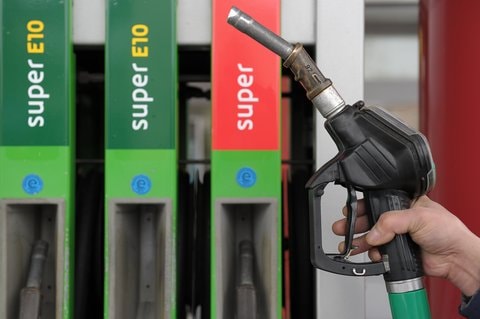Introduction of E10 Fuel
From an article originally published in Driving Force, July 2012
 From January 2014 E10 fuel will be sold in Britain. That is, fuel containing 10% or more of Ethanol. Ethanol is usually derived from crops such as sugar beet, so is part of the push to reduce reliance on oil and other greenhouse fuels. The previous highest ethanol content has been 5%, to which we have all now grown accustomed.
From January 2014 E10 fuel will be sold in Britain. That is, fuel containing 10% or more of Ethanol. Ethanol is usually derived from crops such as sugar beet, so is part of the push to reduce reliance on oil and other greenhouse fuels. The previous highest ethanol content has been 5%, to which we have all now grown accustomed.
As with the introduction of E5 fuel, there is a huge panic as to the likely effects of E10 on classic cars. These can be grouped into three areas. First is that they promote corrosion within the fuel system, especially the tank. Second is that certain plastics are damaged by the Ethanol. Finally the running of the car is significantly altered.
If you put your car away for over winter lay-up it is advisable to make sure that your fuel tank is either completely full or completely empty. Plus, when getting the car out after such a period, it is very likely that the fuel will have “gone off”, and will cause the engine to run badly. The only solution then, is to drain the tank and start again with fresh fuel.
There are a number of the common additives which claim to counter the effects of corrosion from the use of E10. The FBHVC has tested a number of these and has given Millers VSPe Power Plus, VSPe and EPS, Ethomix from Frost A R T Ltd and Ethanolmate from Flexolite Ltd an A rating. If your car has survived E5 fuel as far as plastic components degrading goes, then it will most likely survive E10.
The biggest effect is on engine tune. Ethanol raises the volatility of the fuel considerably for a given octane rating. It is therefore sensible to expect that V8’s in particular will have more trouble with fuel starvation due to under bonnet heat vaporising the fuel en route to the carbs.
The volatility of the E10 will also make the car run weaker for a given fuel octane rating. So you may need to richen the carburettors. But this really only affects the fuel mixture strength at close to idle. At high engine speed and power, in an SU Carburettor it is the needle that determines how rich the mixture is. Your technical team will be able to recommend changing to particular alternative needles.
Words: Chris York
Originally published in Driving Force magazine
July 2012
